GLOBE News
Contemplate, Investigate, Communicate…
Heather Tabisola’s career reflects the essential science skills nurtured by GLOBE .
The discipline of study. The thrill of discovery. A relationship with nature. These are the rewards of being a scientist.
But another reward—and a skill that some GLOBE students find challenging—is learning how to articulate and communicate the meaning of scientific research to others.
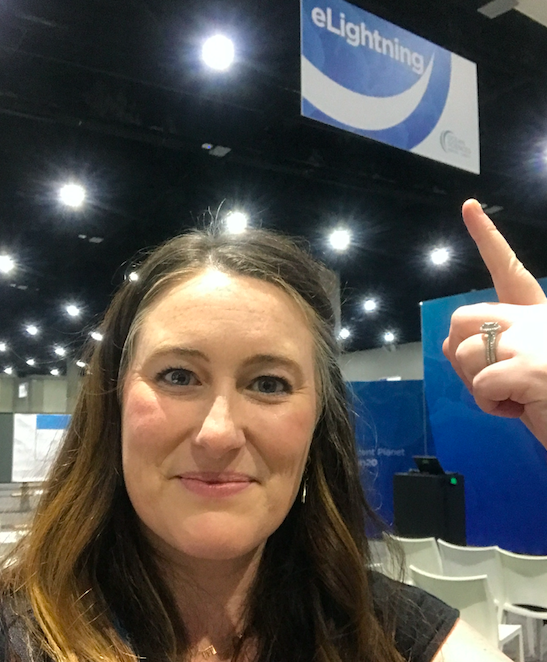
As GLOBE celebrates its 25th anniversary, Heather can claim to be part of the program for almost that long, as a student, implementer of GLOBE protocols, reviewer at a Student Research Symposium, and friend to the people who make GLOBE happen.
Heather didn’t exactly choose science as either a hobby or an avocation, it was just a part of her everyday life. “I almost lived on a boat,” she said. Born in Plymouth, Massachusetts, “I was in the water so early. It was always around me. My grandmother was a swim instructor at the YMCA. My parents had me in tidal puddles playing with periwinkles and horseshoe crabs.” She attended the Acadia Institute of Oceanography in Seal Harbor, Maine, as a middle-schooler, giving her a more formal introduction to marine science.
In public high school, “we went through a lot of science that never stuck for me, but I loved marine biology. In my honors biology class, I did an end-of-the year project on sea turtles and artificial light and the teacher—who had told us we’d never be scientists—said it was ‘exceptional.’ My girlfriend and I still laugh about it to this day. The irony is that a lot of it didn’t stick well for me…like Mendel and genetics…and I didn’t put in a lot of studying-type effort. But this darn project…it was tangible. I felt strongly about it. I understood it, it was familiar…it was easy for me to grasp.”
Tabor Academy in Massachusetts, where Heather spent her sophomore, junior, and senior years in the late 1990s, immersed her even more deeply in scientific field work…and introduced her to GLOBE.
Tabor Academy prides itself as “an ambitious and supportive community where students take risks, challenge themselves, mentor others, and prepare to lead as they live and learn in our school by the sea.” The same words could serve as Heather’s professional philosophy as a leader and communicator.
Teacher Dick Harlow, an early implementer of GLOBE at Tabor in 1992 where he taught oceanography, biology, and environmental science, has fond memories of Heather and her involvement in the program. “She is one dedicated woman, but I must say I am biased,” the 84-year-old retiree said last summer. “She was a favorite in my GLOBE program and willing to extend the extra effort whenever it was needed,” he said.
“I was the type of teacher that did not feel students got the most out of a textbook and had to get outside,” he said. “When I heard about GLOBE, I immediately wanted to be part of it.” These were the early days of GLOBE—no apps, no data feeds to NASA—mainly a large notebook “that had all their protocols…what we had to do, what I had to do with students,” said Dick.
“Every Saturday morning for three years at 6 a.m., we would go out into the streams and rivers to learn more about the ecosystem and put the puzzle pieces together,” Heather said. She learned about phosphate runoff from laundry and lawn fertilization and how it affected the environment of cranberry bogs. “Mr. Harlow was a really big fan of GLOBE. He took us kids to longstanding spots for data collection, sometimes me, sometimes three or four of us…a Bronco cruising the streets of Marion, Massachusetts” at the crack of dawn.
“She was in charge,” Dick Harlow says proudly. “I was the transportation, the students were the investigators. Somebody in our group had to take charge. And that was Heather.”
“We had several areas where we were testing nitrates, oxygen, and CO2 levels,” said Dick. “We would drive around and do the tests, then go to the local café and have coffee and donuts. Hey, they’re kids, you have to do that, you can’t just have them work. Not that early in the morning!”
Often sleepy, sometimes reluctant, the students responded to Heather’s enthusiasm and leadership, and Dick counted on her to provide motivation and focus. “It didn’t matter who came with us, Heather was the leader. But in a nice way, not domineering at all. She knew what had to be done.”
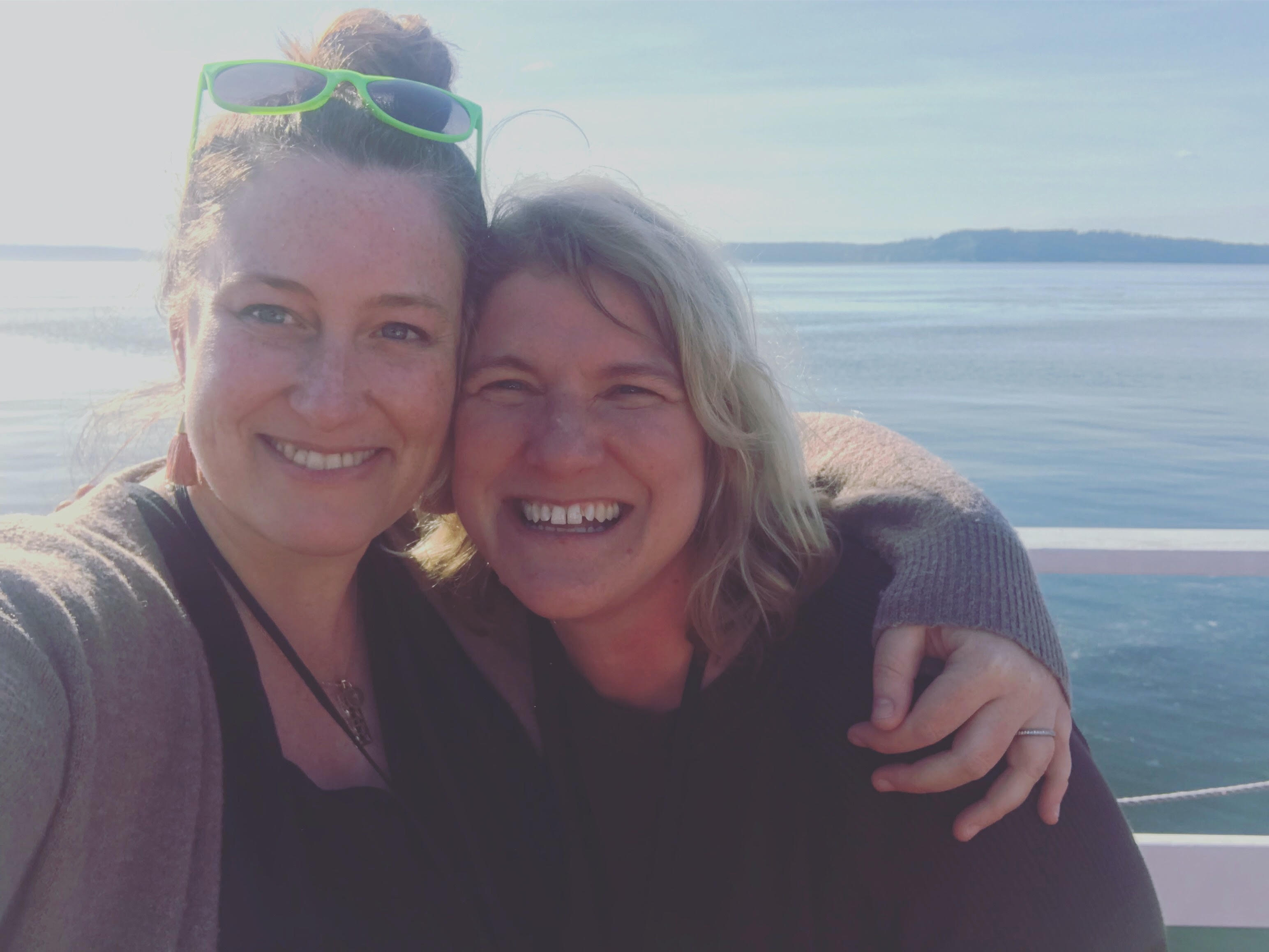
One high school GLOBE experience at Tabor proved prescient. “I remember one day in my late junior or early senior year sitting at UNH where I first met Jen Bourgeault and her GLOBE team, working on a land cover project. I will never forget that room, and the big, long tables, and the smell of those older UNH halls. Over the years, Jen and I stayed in touch, collaborated on some GLOBE work, and became friends.” As it is for many, college (for Heather, the University of New Hampshire) gave Heather a sometimes cryptic but eventually revealing trajectory toward a career, with two academic concentrations: marine/freshwater biology and journalism. (Image left, Heather and Jen Bourgeault at the 2019 Northwest SRS).
“Even at UNH, I wasn’t quite sure what I was going to do, but I found exactly what I wanted to do in my senior year. It was a joint project between engineers and scientists, which is ironically very much what I do today,” she said. “My advisor said, ‘Heather, I have a class you’d be very interested in.’ The class brought well-known local scientists (including marine biologists Barbara Block, Scott Krause, and Michael Moore) into the classroom with a problem and some funding.”
Heather and her project peers designed a scale model of a right whale they put into a long tow pool. “It was such a fun and frustrating project. The engineers would say, sorry, that won’t work, and then we’d have to figure it out. That’s what I do every day now,” Heather said, whose job requires her to coordinate and, often, reconcile the expertise of diverse disciplines and perspectives.
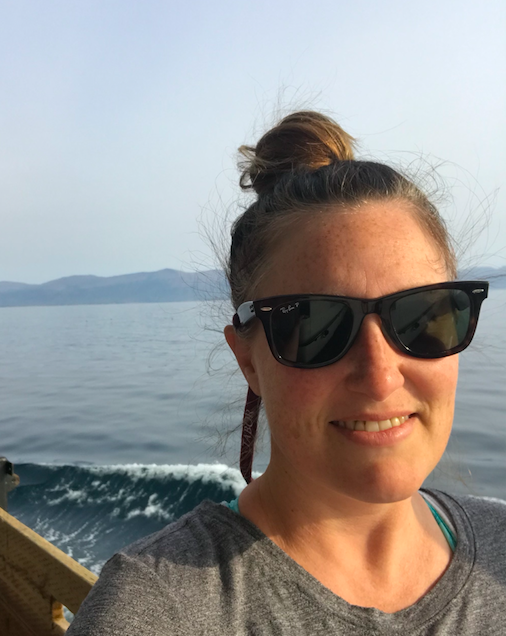
Over time, she travelled extensively observing cetacean biology and zooplankton. For NOAA (National Oceanic and Atmospheric Administration) Heather was a science camp educator at the University of Washington. With the Woods Hole Oceanographic Institute, she studied the population dynamics of toxic algae in the Gulf of Maine.
As a vessel coordinator for a marine management and ocean services company, Heather immersed herself in activities that might not seem science-related—work that might resonate with GLOBE students who have certain skills and interests: managing operations; communicating between vessel personnel, vendors and clients; arranging for supplies and tracking purchases; scheduling; and budgeting.
For nine years, Heather working as a marine environmental consultant in the seismic industry, in which oil and gas companies conduct tests to find offshore energy resources. Heather’s job was to establishing marine mammal mitigation and protection guidelines for large ocean-going vessels in the Atlantic Ocean, the North Sea, the Gulf of Guinea in Africa, the South Atlantic, and the Baffin Bay in the Arctic, to name a few, observing and documenting from their decks.
“Survey vessels require marine mammal observers,” she said. Some might expect tension when a marine biologist serves to minimize the impact of large boats and their cargo on sea life, but Heather found her communication skills especially helpful. “I was welcomed because I was respectful,” she said. “We’re all out there trying to do our jobs.” It was not her job to protest, Heather explains, but to collaborate.
Eventually, Heather needed to be back on land. “I didn’t want to be on a boat anymore. You’re out there for six weeks or more, making some friends, making good money, but it was time to go. I got to do some pretty incredible stuff, internationally, that comes with being ‘the observer.’”
For five years now, Heather has been at the University of Washington in a position of considerable influence. “People would ask why would I want this job [of research coordinator], but it’s very much a natural progression for me. I love marine science. I’m good at project management and organization. I like to tell stories. And I still get my hands-on research.”
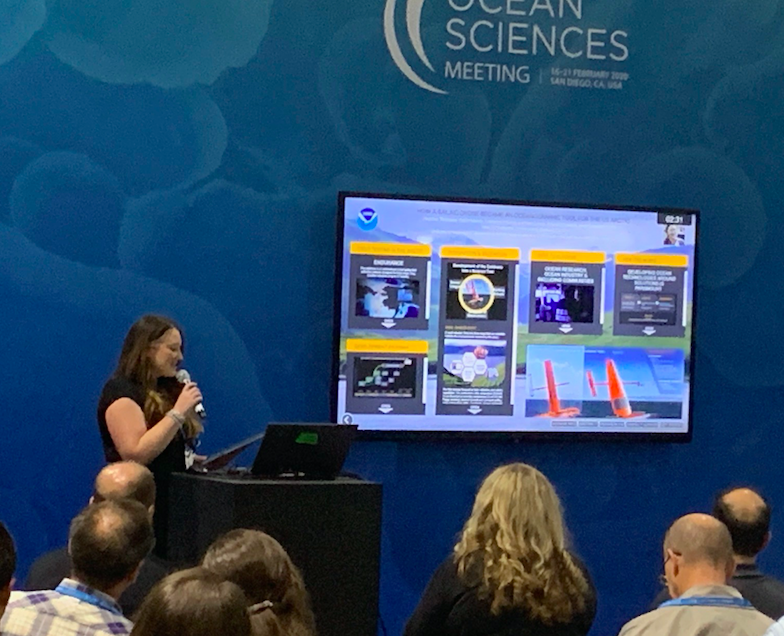
For Heather, effective science communication represents a primary challenge in the 21st century. “It’s a big thing for scientists, with a lot more pressure to communicate their science, but it’s not for everyone. Scientists should have a friend who can write the plain language summary. Journalism operates on an inverted pyramid [in terms of structuring the delivery of information], but that’s not the model for a scientific paper.” When communicating with legislators, the press, and the public, Heather said, “you need to start with the conclusion…the ‘big idea’…and not describe every ounce of details.”
GLOBE students who find they’re good at supporting investigation teams, managerial details, logistics, budgeting, field operations, training, and coordination will find inspiration in Heather’s example. “I have almost 40 projects going all the time,” she said, with “many partners…50 in one program alone.” Those programs include ECO Foci (Ecosystems and Fisheries—Oceanographic Conducted Investigations) and ITAE (Innovative Technology for Technology for Arctic Exploration) research activities such as the Saildrone Arctic Missions.
As students learn about scientists and wonder how they might fit into that world, Heather emphasizes the value of “self” and “self within a team.”
“We don’t always choose our path; our path chooses us. Be confident in what you bring to the table. It’s okay to say, ‘This s what I am good at. How does that match with the work that needs doing?’” She likens it to a power-mapping of skills, networks, and resources.
Heather stays close to young people engaging in science activities as a member of the NOAA Science Camp Steering Committee and co-leader of Pacific Marine Environmental Laboratory activities during camp weeks, where she advocates for using GLOBE protocols. “I think water quality measurements in general are so foundational for any science we do, having that ability to collect data with a sense of ownership,” she said.
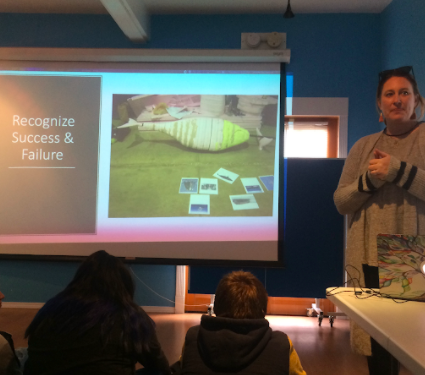
In 2019, Heather served as a reviewer at a Student Research Symposium in Seattle (Right image: Heather presenting to students at the Seattle SRS). “Jen has stayed in touch with me and what I’ve been doing for a long time, and she invited me to meet the kids, be a mentor, and tell my story,” Heather recalled.
“They were absolutely outstanding. They had some amusing questions, but always tied to the community. I love that about GLOBE… it’s the core of what science should be. If you’re not building a solution, then what’s the point in doing it?”
One group of Alaskan students’ research particularly fascinated her. “A lot of the work I do focuses on Alaska, so I’m familiar with the climate,” she said. “Their questions were so wonderful and real, like where had all their fish gone? It’s not just a science experiment to them. It’s learning the history of their people, carrying on that story, using their own knowledge and combining it with science. Own your story. Own your data. That’s the powerful part.”
"Own your story. Own your data. That’s the powerful part."
In her role at the University of Washington, ongoing connections to GLOBE, and raising two young children as science-thinkers (“It’s like Serena Williams’ daughter already playing tennis…you’re setting an example every day… when your four-year-old comes to you and starts talking about siphonophores*, you’re just proud”), Heather works to keep science at the forefront of parenting, policy, and politics.

In her home, around a conference table with a team of researchers, or writing articles that will inform the actions of leaders internationally, scientist Heather Tabisola is grateful that her career allows her to “do what we do and keep it moving forward. Bring science to resilient communities. So much of it is collaboration…and communication.”
—C. Ralph Adler
*Siphonophorae (from Greek siphōn 'tube' + pherein 'to bear') is an order of Hydrozoans, a class of marine organisms belonging to the phylum Cnidaria.
News origin: United States of America




